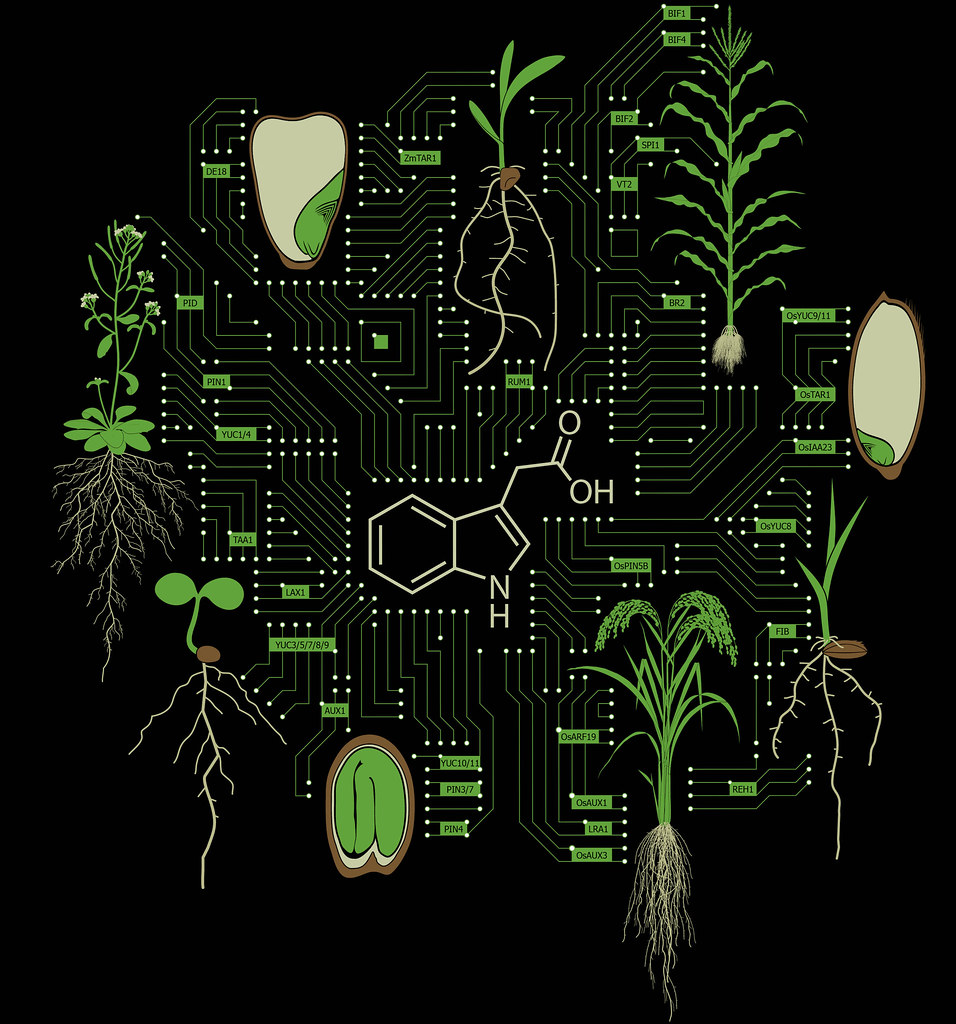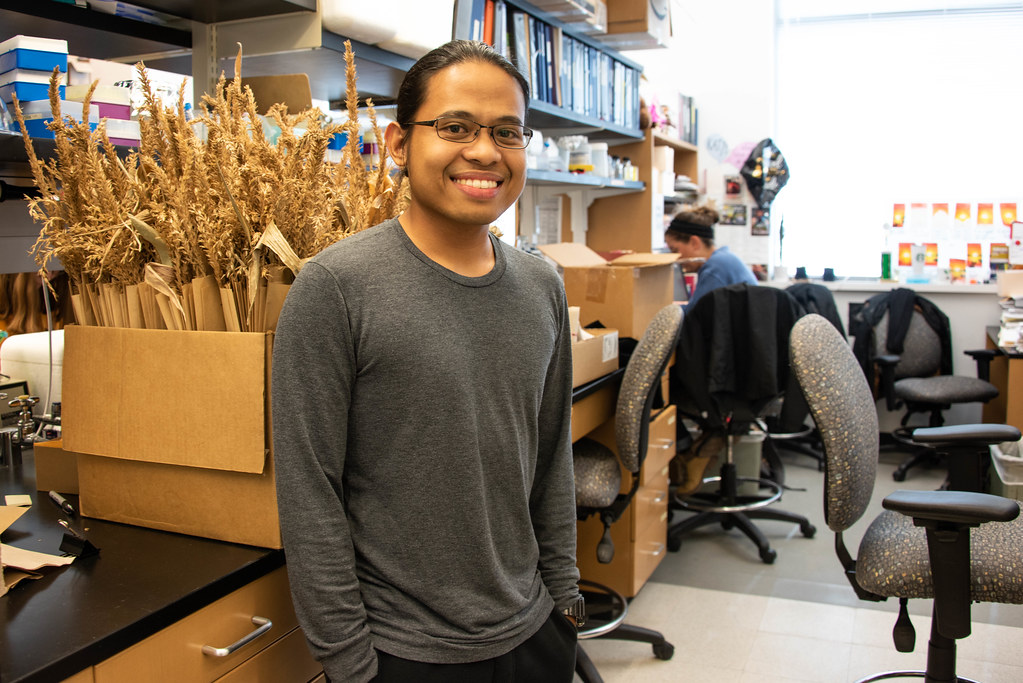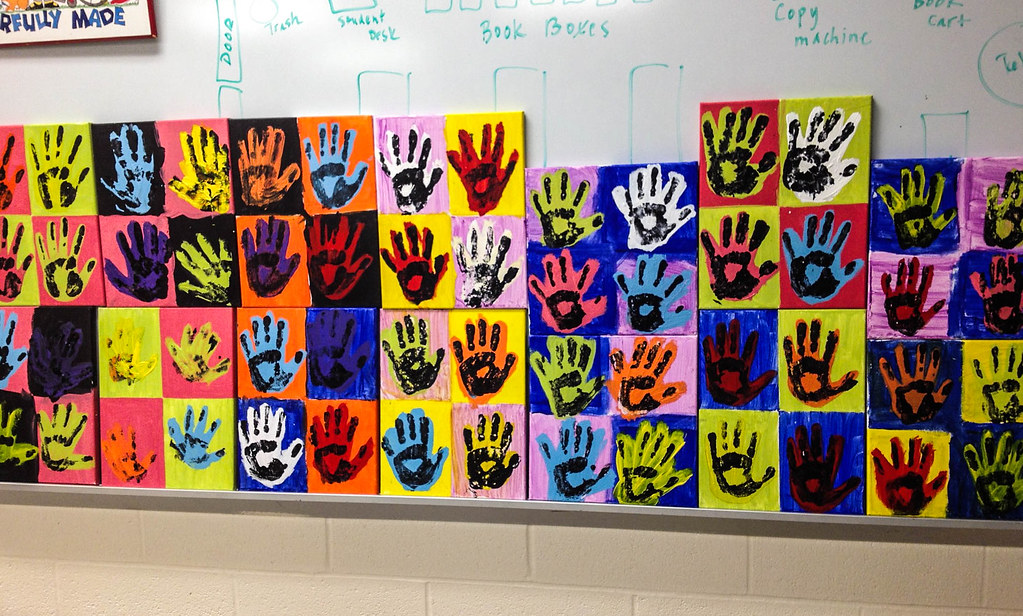Published on

By Lauren Hines | Bond LSC
The scene of the science fair wouldn’t
be complete without the paper mâché volcano, the gymnasium full of colorful
display boards set up across a floor and the voices of students each giving
their own presentations to their parents.
For Janlo Robil — a Ph.D. candidate in plant development genetics who works in the Paula McSteen lab at Bond LSC — his excitement for science and creativity was born in this mix of dioramas, experiments and hypotheses.
That passion has led Robil to a
place where his science and art can interact. While his experiments focus on
how the plant hormone auxin affects growth, he uses his artistic skills to
create figures and translate that science to his editors.
Robil started out as a freelance graphic artist in the Philippines where he’s from — creating logos and company designs. His inspiration comes from “natural things” and “creating shapes from what we already see as natural.”
“What’s nice about being a scientist and an artist is
that I always look for art in everything I do in my science,” Robil said.
Using Adobe Illustrator as his
medium, Robil translates the science he sees onto the screen. Recently, he
submitted a piece entitled, “Auxin Motherboard” to the Kemper Museum of
Contemporary Art in Kansas City in October 2019.

Even though Robil isn’t creating
art now, he sees methods of art come up during his work in the lab.
“When I look at things in the microscope, I
pay so much attention to detail that it slows me down,” Robil said. “The same
is true when I am working in Adobe. I am very systematic about it. I feel like,
in my head, I have an assembly line on how things are going to be done. I know
a lot of artists are a lot like that. They are very organized, and they are
very systematic…. Some of the technical stuff I bring to art, while I also
bring some of my creative stuff to my science. So, there is a very good
symbiotic relationship between the two.”
According to David Epstein, science journalist and
author, scientists in general are no more likely to have artistic hobbies than
the general public, but researchers at UCLA continue to be intrigued by the parallels and
intersections of art and science.
“I see evidence of the interdependency of art and science
every day. Just last week I had a wonderful conversation about a symposium on
the physics of music,” said Pat Okker, the dean of the College of Arts and
Science.
Carlos Rivera — a fourth-year graduate student who studies brain biology in Tucker Hall — is similar to Robil in his love for both art and science. In high school, one of Rivera’s drawings was chosen for the Missouri Fine Arts Academy.
“I
always like to incorporate art into all the things I can do,” Rivera said. “I
haven’t done it in a while, but when I first started off here at Mizzou I was
taking pictures of brains, and in order to get good quality pictures you kind
of have to know how things contrast against each other.”
Rivera
would take pictures of fly brains, which required special instruments and
precision. Now, Rivera is working on a mural of R2D2 shooting glial cells
instead of lasers. A glial cell is a part of a neuron that provides support for
the neuron, and scientists are still figuring out the intricacies of their
function.
In
order for scientists to make more discoveries, they need to tap into their
artistic sides.
”Just
in general, when you’re an artist you have to learn how to think creatively and
a lot of scientists think that just comes with learning science, but you have
to learn how to be creative sometimes,” said Katherine Guthrie, a graduate
student working in the McSteen lab at Bond LSC. “So, when you have an art
background, it’s a lot easier to think outside the box when you’re thinking
about experiments or thinking about possible outcomes or planning for the
future.”
Guthrie works
with Robil in plant development genetics where they study how interrupting the
auxin hormone pathway affects development. By understanding what it looks like
when it’s broken, they can figure out how to make sure the pathway works best.
On and off for the past 10 years, Guthrie has also been teaching art classes of
every medium in school and studios.

”The
reason I’ve always loved art is because most people feel like they can’t do it
and when they find out they can, it’s like this glorious epiphany like, ‘Wow!
This is cool. I just made that.’” Guthrie said. “The reason I like science is
because you get that epiphany, and the reason I like art is because you get to
share that often.”
When
art and science get the opportunity to interact, those outside of the
scientific community are given a bridge to see what’s so exciting.
“I’m
now realizing the reason I am excited about science fairs is that it’s also an
opportunity for me to show my creativity,” Robil said. “You see these kids
making volcanoes like every time in the science fair, and I think one of the
reasons why they’re so keen to make these things is that they can also show how
creative they are and also show the scientific aspect of it. So, there are
people who are really really technical, but then I think when you add
creativity to the technicality of science, that’s when it gets really
interesting for me.”